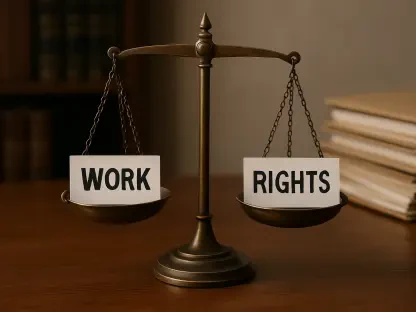Examining the gender and diversity disparities in corporate leadership can provide insights into broader societal issues and structural inequalities. The findings from a study analyzing over 3,000 LinkedIn profiles shed light on the predominance of traditional male names in senior leadership roles, such as CEO, COO, CTO, CFO, President, Vice President, Director, and Manager positions. Notably, names like John, Michael, and David are common, while only one female name, Jennifer, breaks into the upper ranks, indicating significant gender disparities. These patterns prompt a deeper examination of whether systemic barriers are obstructing the rise of women and diverse individuals to top leadership positions.
Gender and Generational Disparities in Leadership
The predominance of traditional male names in senior leadership roles highlights the ongoing struggle for gender equality in the corporate world. The data reveals that these leadership names are likely more common among older generations rather than younger ones, indicating that older leaders still dominate the C-suite, leaving millennials and Gen Z underrepresented. Even as the top names among millennials, such as Michael, Christopher, Matthew, Joshua, Daniel, Jessica, Sarah, Amanda, Ashley, and Jennifer, begin to emerge, their impact on leadership roles remains limited.
These generational shifts suggest that while newer generations might drive social and cultural progression, their presence in leadership roles has yet to fully manifest. The delay in seeing more millennials and Gen Z individuals in senior positions is likely due to existing systemic barriers, such as networking opportunities, mentorship availability, and ingrained corporate hierarchies favoring more established figures.
The continued prominence of male-dominated names serves as a stark reminder of the persistent challenges women face in climbing the corporate ladder. Breaking through the proverbial “glass ceiling” remains a significant issue, as organizational structures, biases, and possibly even hiring practices favor traditional male leadership. Therefore, it is essential for companies to adopt more inclusive policies and practices that actively support and promote women into leadership roles.
Ethnic Diversity and Inclusive Leadership
In addition to gender disparities, the analysis reveals a notable lack of cultural diversity in the names associated with senior leadership positions, underscoring ethnic barriers existing alongside gender biases. The dominance of white male names indicates a need for enhanced diversity and inclusion initiatives in the workplace. This lack of ethnic diversity points to systemic roadblocks that prevent minority groups from advancing to executive roles, further entrenching the dominance of homogenous leadership teams.
Amanda Augustine, a career expert, emphasizes how unconscious biases play a role in maintaining these imbalances. Biases favoring classic American masculine names can cloud judgment in hiring and promotion decisions, undermining the pursuit of a diverse and inclusive executive team. As organizations navigate diversity, equity, and inclusion (DEI) initiatives, tackling these biases is crucial for fostering a representative workforce that mirrors the diverse demographics of the broader society.
To address these gaps, it is imperative for companies to re-evaluate their recruitment and talent development processes. Implementing blind recruitment practices, offering mentorship programs for underrepresented groups, and ensuring equal opportunities for professional growth can act as pivotal steps toward inclusive leadership. These measures would not only promote equity but also leverage the diverse perspectives and innovative ideas that a varied leadership team can bring to the table.
Overcoming Systemic Barriers
Examining gender and diversity disparities in corporate leadership offers critical insights into broader societal issues and structural inequalities. A study analyzing over 3,000 LinkedIn profiles has revealed a predominance of traditional male names in senior executive roles, such as CEO, COO, CTO, CFO, President, Vice President, Director, and Manager. Names like John, Michael, and David frequently appear in top positions, whereas only one female name, Jennifer, manages to break into the upper echelons, reflecting significant gender imbalances. These observable patterns prompt a deeper examination of whether systemic barriers are hindering the advancement of women and diverse individuals to high-ranking leadership roles. Understanding these barriers helps address the underlying issues preventing equal representation and opportunities in corporate environments. Promoting leadership diversity is not only a matter of fairness but also essential for fostering inclusive, innovative, and effective corporate cultures.









